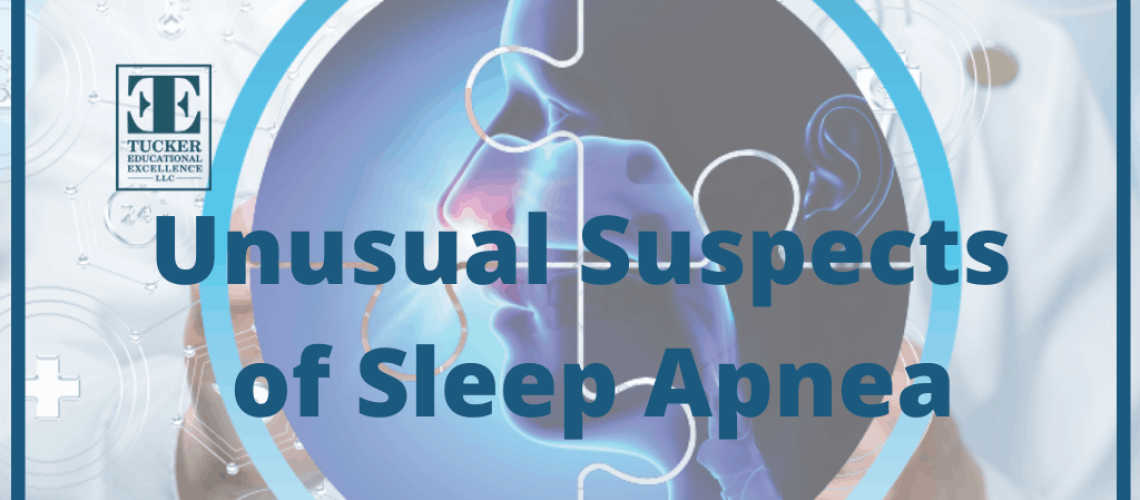
Some of the more common signs of Obstructive Sleep Apnea are snoring, morning headaches, daytime fatigue, mood swings and waking up with dry mouth. Today, we are going to share some of the not so common connections to Obstructive Sleep Apnea (OSA). Next time your patients discuss any of the below conditions, make it a priority to provide further testing for OSA.
Did you know? – Since patients tend to see their dentist more frequently than their physician, dentists are in a unique position to screen and treat snoring and OSA. If you would like a partner in the area of airway and breathing disorders, Tucker Educational Excellence provides various live lectures on the topic, as well as webinars and in-office trainings. In the meantime, learn more about our Complete Program, and we look forward to helping you amp up your airway and breathing disorders practice!
All Rights Reserved. Tucker Educational Excellence, LLC. ©
Designed With ♥ By 239WEB.com